Domowe kiszonki - kiszony koper włoski. Fermentowany fenkuł na ostro, czyli pyszna i zdrowa kiszona sałatka
Fenkuł, czyli koper włoski to bardzo pyszna i aromatyczna roślina o wszechstronnym zastosowaniu. Bulwę kopru możemy spożywać na surowo, gotowana, pieczoną, jak i kiszoną. Zielone, świeże i posiekane liście to pyszny i aromatyczny dodatek do wielu potraw. Suszone nasiona kopru włoskiego to również bardzo aromatyczna przyprawa, jak i podstawowy składnik znanej herbatki koperkowej.
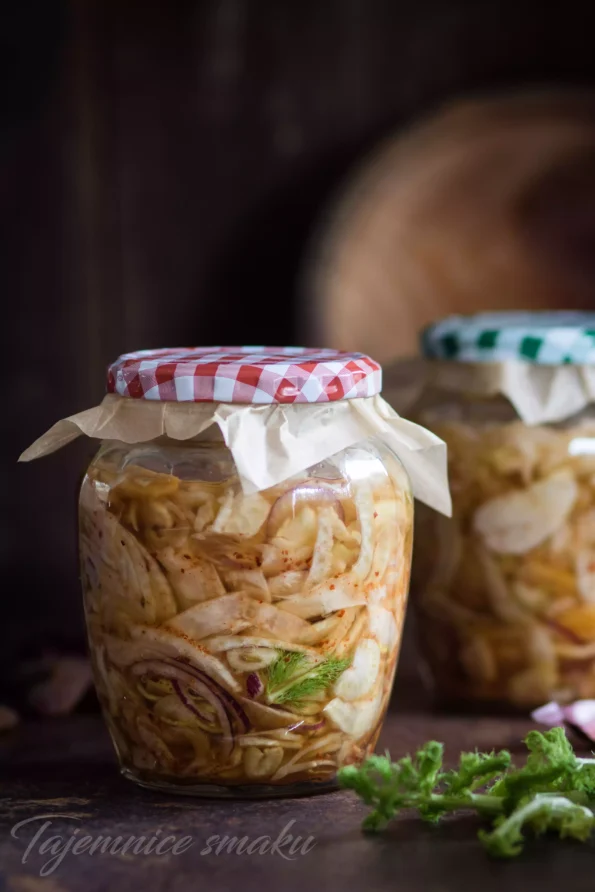
Smak i zapach kopru włoskiego jest bardzo charakterystyczny. Swym aromatem przypomina anyż lub lukrecję i niestety nie każdemu to odpowiada. Jednak w zależności od sposobu przygotowania fenkuł za każdym razem smakuje inaczej. Polecam eksperymentować w kuchni z koprem włoskim, bo to bardzo smaczne i zdrowe warzywo.
Kiszona sałatka: koper włoski, suszone morele, czerwona cebula, czosnek, imbir, gochugaru i kolendra.
SKŁADNIKI
WYKONANIE
- Solanka - 1 kopiasta łyżka soli kamiennej niejodowanej na 1 l wody przegotowanej i ostudzonej do temperatury pokojowej.
- Czosnek, czerwoną cebulę obieramy i kroimy na cienkie plasterki.
- Imbir obieramy, kroimy cienko w plastry, a następnie w paski.
- Oczyszczony koper włoski kroimy na bardzo cienkie plastry (najlepiej jest go poszatkować na tzw. mandolinie).
- Suszone morele przepłukujemy wrzątkiem na sitku, następnie kroimy w cienkie paski.
- Poszatkowany koper przekładamy do miski, dodajemy plastry czerwonej cebuli i czosnku, paski imbiru i moreli oraz płatki papryki i ziarna kolendry.
- Całość dokładnie mieszamy, przekładamy do słoików i ubijamy (ugniatamy ciasno).
- Zalewamy solanką, dociskamy tak by nic nie wypływało na powierzchnię zalewy. Optymalna wysokość zalewy to 1-2 cm nad fermentującym produktem i 2-3 cm poniżej krawędzi słoika.
- Warzywa dociskamy małym talerzykiem, szklanym wieczkiem od słoiczków typu Weck, kamieniem lub specjalnym dociskiem do kiszonek. Jest to ważna zasada bezpiecznej fermentacji, ponieważ wszystko, co zostanie wystawione na działanie tlenu, może pleśnieć.
- Słoik zamykamy i odstawiamy do fermentacji w temperaturze pokojowej na 2 - 3 tygodnie. Po tygodniu polecam sprawdzić smak kiszonki, czasami proces fermentacji przebiega bardzo szybko.
- Kiedy uznamy, że kiszonka ma smak, który nam odpowiada wstawiamy słoiki z fenkułem do lodówki lub do zimnej piwnicy.
- Ile kiszonka może stać w chłodnym? Trudno na to jednoznacznie odpowiedzieć. Ostatnio wyjęłam z lodówki roczną kiszonkę z fenkuła z morelami i była wyśmienita. Koper włoski był nadal chrupiący i już żałowałam, że zrobiłam tylko jeden słój.
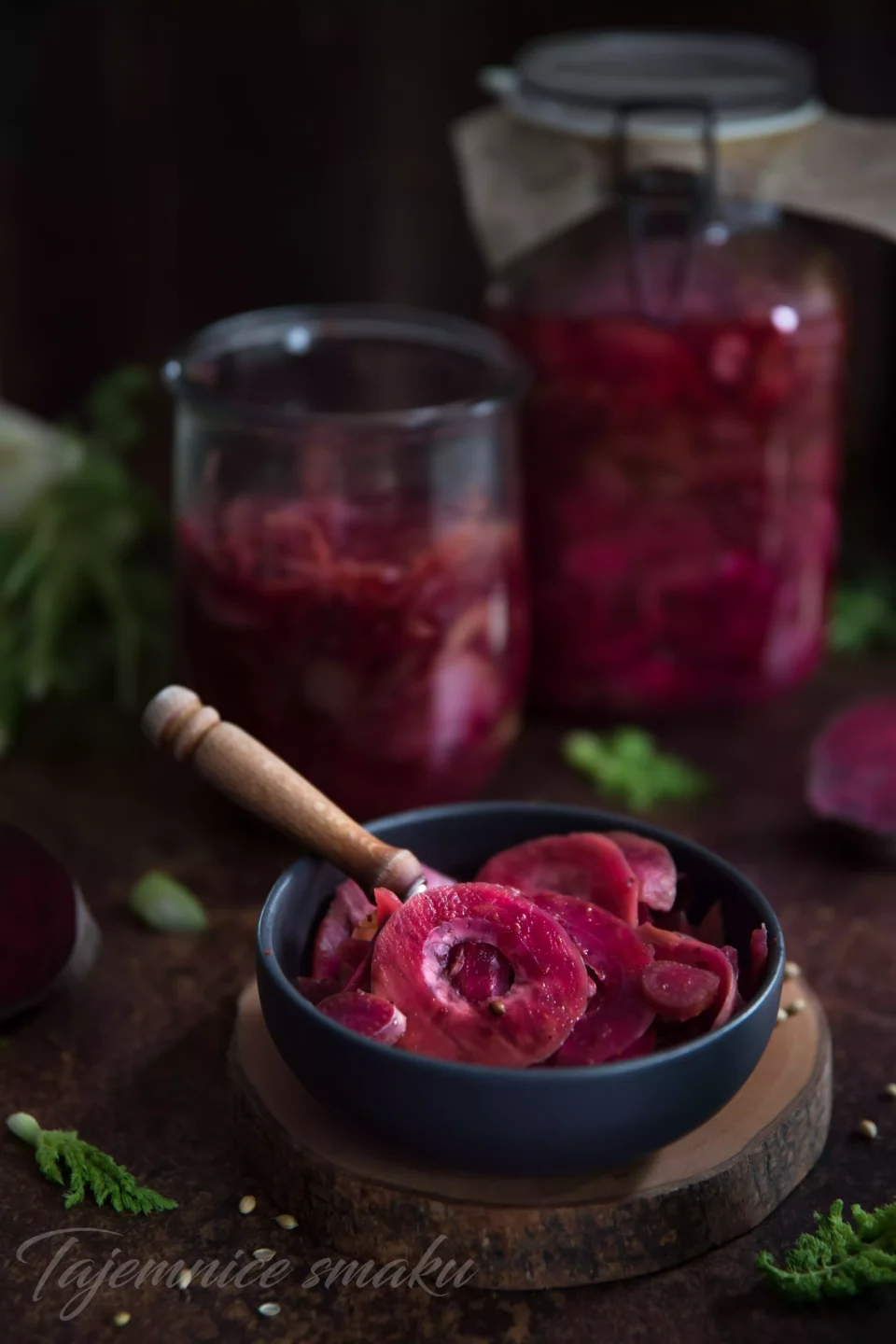
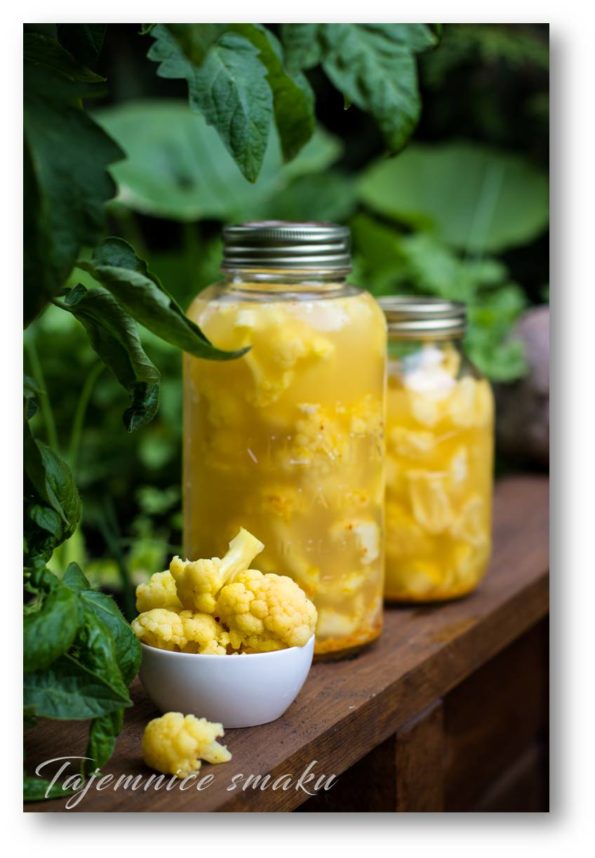
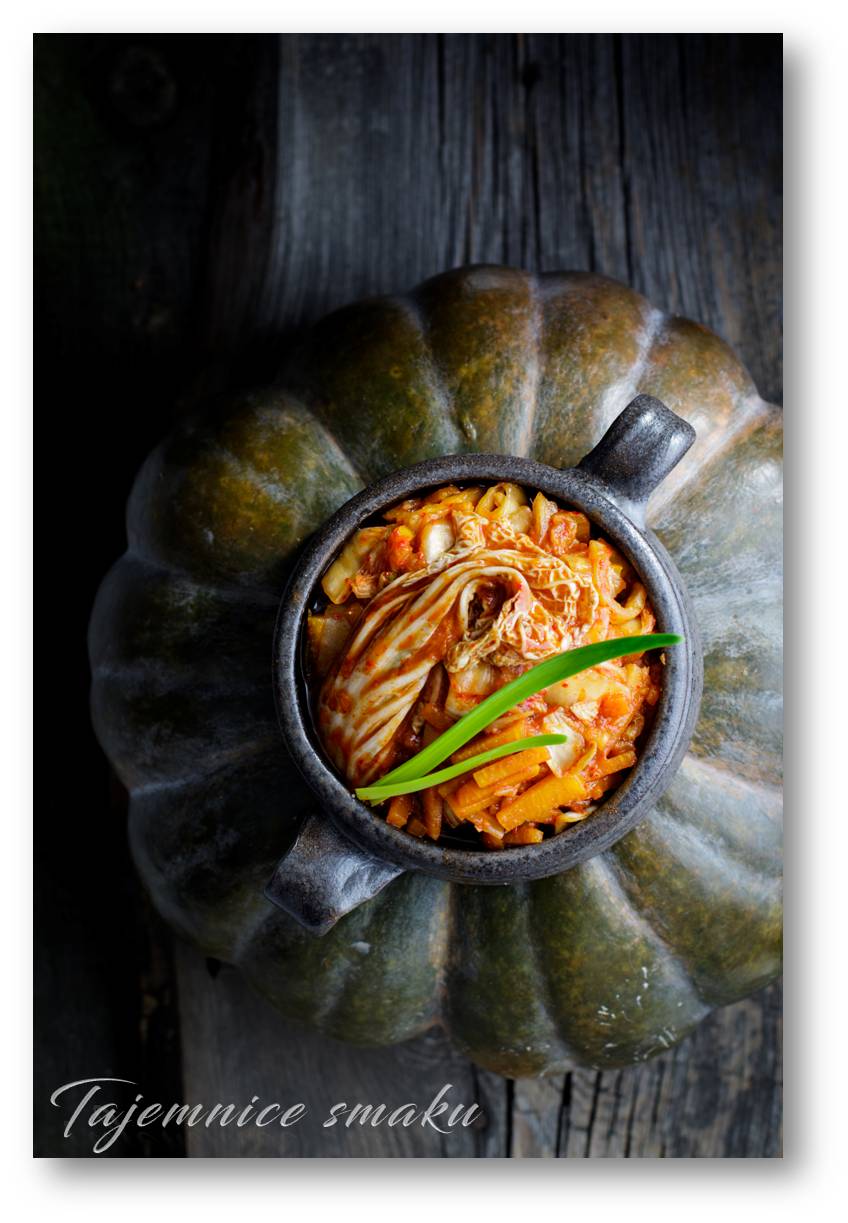
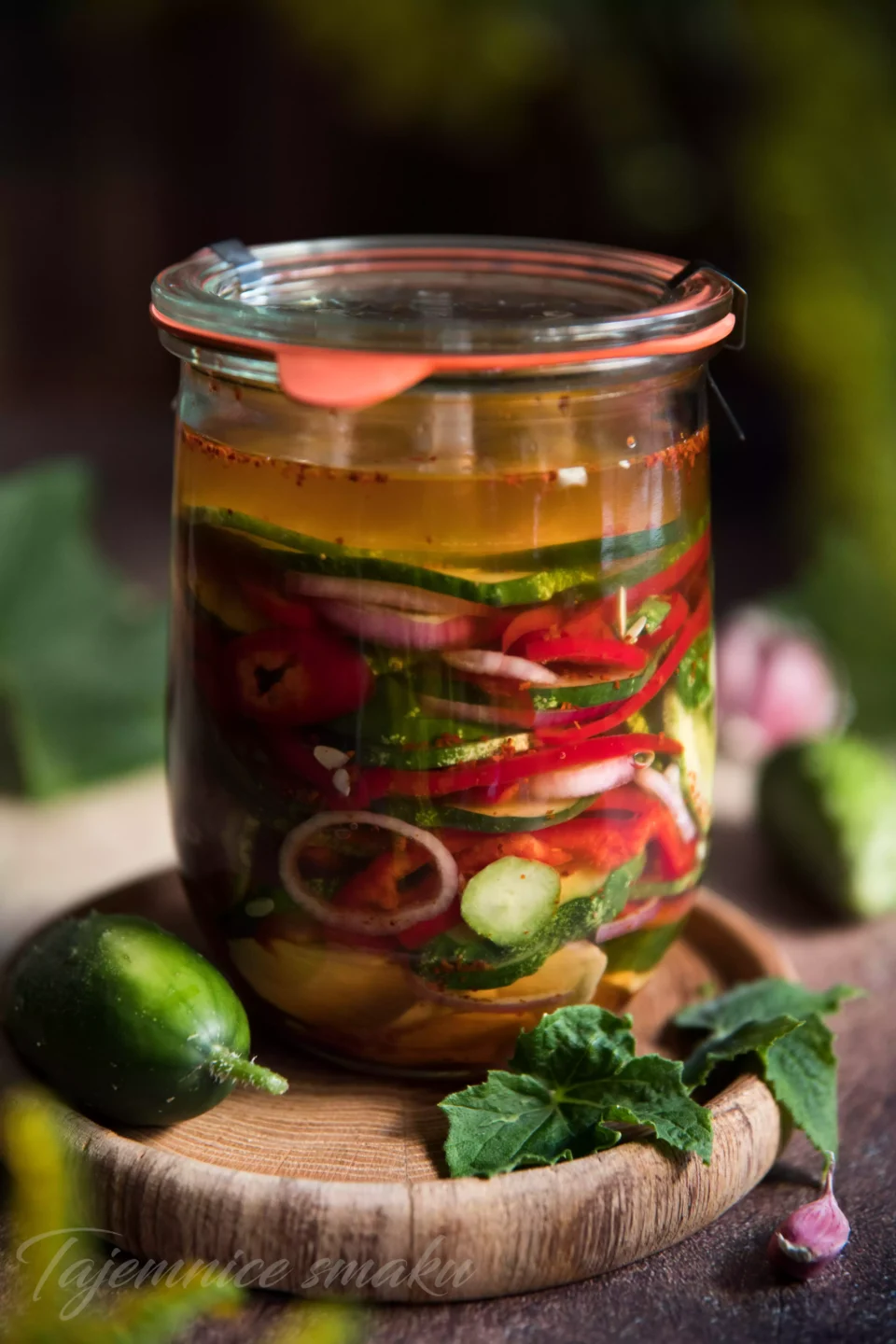

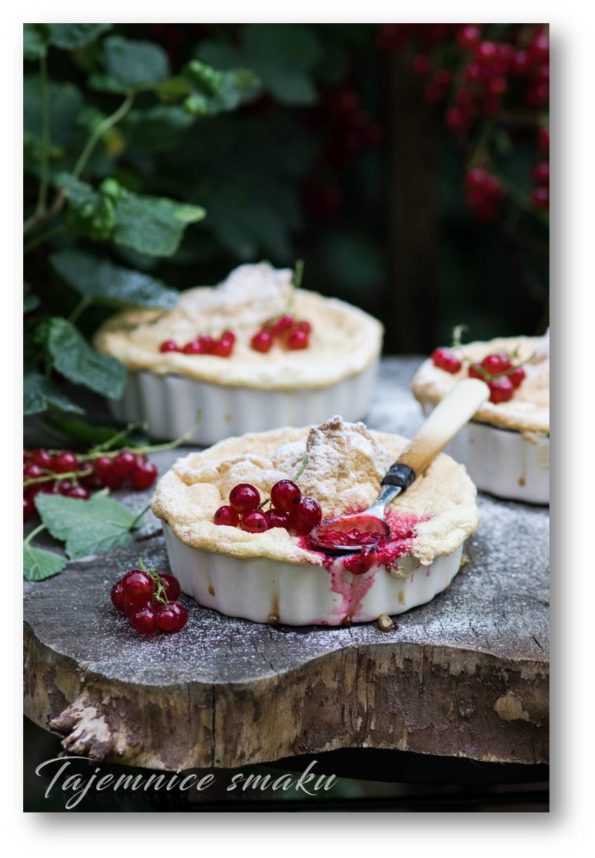
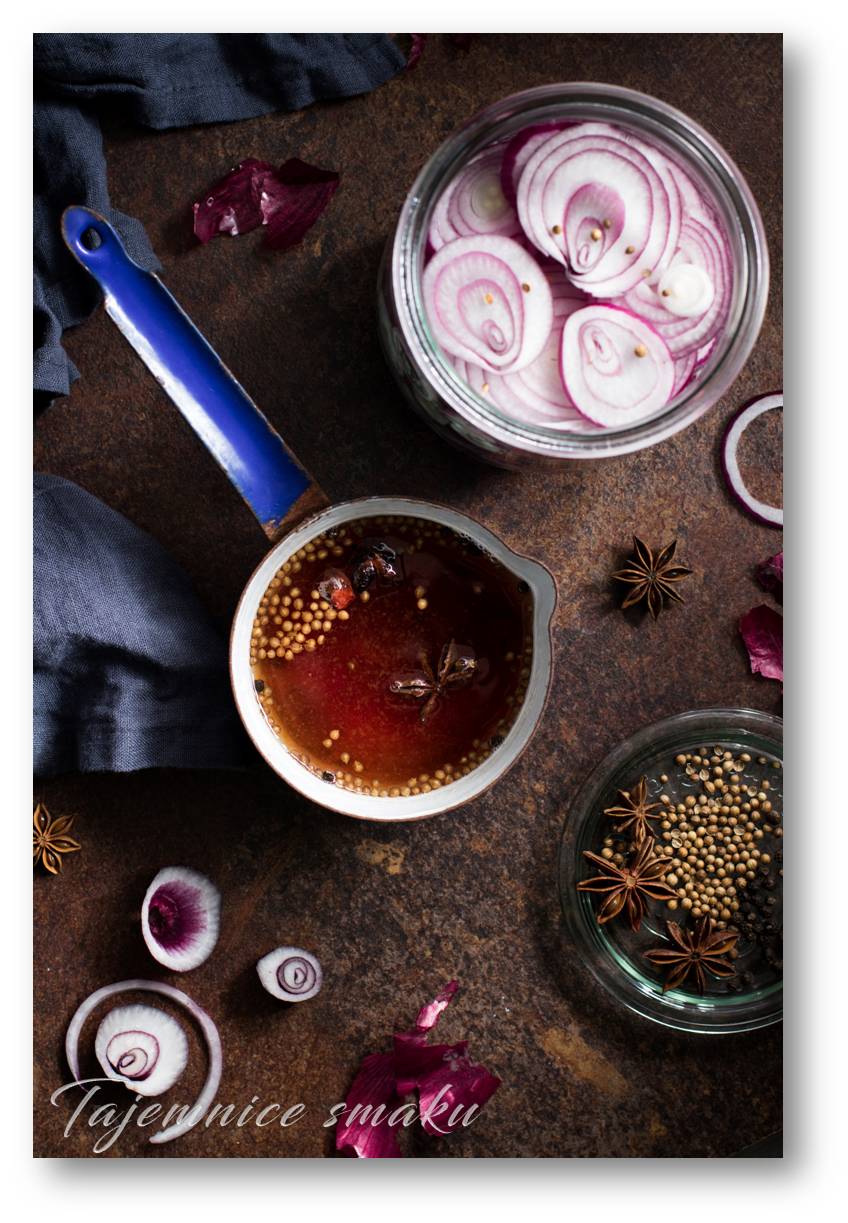
Karolina 2023-02-26 10:27:53
Fascynujące, jak proste procesy fermentacji mogą przekształcić smak i wartości odżywcze produktów spożywczych, jak w przypadku kiszonego kopru włoskiego i ostrej sałatki z fermentowanego fenkułu. :)
Odpowiedz
TajemniceSmaku 2023-02-27 11:18:51
O, tak 🙂 Fermentacja to magia 🙂
Odpowiedz
Kasia 2023-02-27 07:31:29
Lubię kiszonki, jednak nigdy nie próbowałem kiszonego koperku włoskiego. Dzięki temu wpisowi mam ochotę spróbować, na pewno warto. :)
Odpowiedz
TajemniceSmaku 2023-02-27 11:17:54
Tak, warto! To bardzo smaczna kiszonka 🙂
Odpowiedz
Dodaj komentarz
Twój adres e-mail nie zostanie opublikowany
Możesz się zalogować, aby automatycznie wypełnić dane.